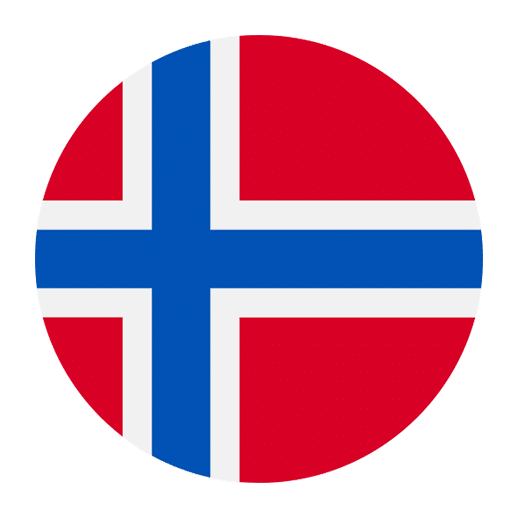The Norwegian language, with its melodious tones and rich tapestry of words, is not just a means of communication but a window into the culture and history of Norway. By diving into the cultural and historical vocabulary of Norwegian, language learners can gain a deeper understanding of the nation’s identity and its storied past.
Learning any language involves more than just memorizing vocabulary and grammar rules. Understanding the historical and cultural context behind words can enrich your language learning experience and bring you closer to the heart of the culture. In this article, we’ll explore some key Norwegian words and phrases that carry significant cultural and historical weight.
Historical Vocabulary
Viking Legacy
Norway’s Viking Age, which spanned from the late 8th century to the early 11th century, has left an indelible mark on the Norwegian language. Many words from this era are still in use today, reflecting the country’s seafaring and warrior past.
Viking: The word “Viking” itself comes from the Old Norse “víkingr,” which referred to sea raiders and explorers. The Vikings were instrumental in shaping the history and culture of Norway, and the term is now synonymous with the adventurous spirit of the Norse people.
Langskip: This term refers to the longships used by the Vikings. These ships were renowned for their speed and agility, making them perfect for both exploration and warfare. The word “langskip” is a compound of “lang” (long) and “skip” (ship).
Skald: A skald was a poet in the Viking Age who composed and recited epic poems and sagas. These skalds played a crucial role in preserving the history and mythology of the Norse people through oral tradition.
Jarls: The term “jarl” referred to a noble or chieftain in Viking society. Jarls held significant power and were often the leaders of their communities.
Medieval Norway
The medieval period in Norway saw the rise of the kingdom and the establishment of Christianity. This era brought new vocabulary that reflected the changing social and religious landscape.
Konge: This word means “king” and has its roots in Old Norse. The establishment of the Norwegian monarchy in the medieval period was a pivotal moment in the nation’s history.
Katedral: With the spread of Christianity, cathedrals became central to religious life. The word “katedral” is derived from the Latin “cathedra,” meaning “seat,” referring to the bishop’s seat.
Bonde: This term means “farmer” and reflects the agrarian society of medieval Norway. The majority of Norwegians during this period were farmers, and the word “bonde” is still used today.
Stavkirke: These are wooden stave churches that were built during the medieval period. The term “stavkirke” is a compound of “stav” (stave) and “kirke” (church). These churches are notable for their unique architecture and intricate wood carvings.
Cultural Vocabulary
Nature and the Environment
Norway’s stunning natural landscapes have a profound influence on its language. Words related to nature and the environment are deeply ingrained in the Norwegian vocabulary.
Fjord: Perhaps one of the most iconic Norwegian words, “fjord” refers to a long, narrow inlet with steep sides or cliffs, created by glacial erosion. The fjords are a defining feature of Norway’s geography.
Fjell: This word means “mountain” and is used to describe the rugged terrain that characterizes much of Norway. Hiking in the “fjell” is a popular pastime for Norwegians.
Skog: Meaning “forest,” this word reflects Norway’s vast expanses of woodland. The country’s forests are home to a diverse range of flora and fauna.
Midnattssol: This term translates to “midnight sun” and refers to the natural phenomenon that occurs in the summer months north of the Arctic Circle, where the sun remains visible at midnight.
Social and Cultural Practices
Norwegian culture is rich with traditions and social practices that are reflected in the language. Understanding these words can provide insight into the Norwegian way of life.
Dugnad: This word describes a voluntary community effort to accomplish a task. “Dugnad” is a deeply ingrained cultural practice in Norway, reflecting the importance of community and cooperation.
Kos: Often translated as “coziness,” “kos” is a concept that encompasses a sense of warmth, comfort, and togetherness. It is similar to the Danish “hygge” and is an essential part of Norwegian culture.
Friluftsliv: This term means “open-air living” and represents the Norwegian love for outdoor activities and nature. “Friluftsliv” is a way of life that emphasizes the importance of spending time in nature for physical and mental well-being.
Janteloven: This term refers to the “Law of Jante,” a social code that promotes modesty and discourages individualism. It is based on a set of ten rules formulated by the Danish-Norwegian author Aksel Sandemose in his novel “A Fugitive Crosses His Tracks.” The “Law of Jante” has had a lasting impact on Scandinavian culture.
Festivals and Celebrations
Norway has a rich calendar of festivals and celebrations, many of which have their own unique vocabulary. These words provide a glimpse into the country’s cultural heritage.
Syttende mai: This term refers to the 17th of May, Norway’s Constitution Day. It is a national holiday that celebrates the signing of the Norwegian Constitution in 1814. The day is marked by parades, traditional costumes, and various festivities.
Jul: This is the Norwegian word for Christmas, a time of year that is rich with traditions and customs. “Jul” celebrations often include “julebord” (Christmas feasts), “julegaver” (Christmas gifts), and “julemarked” (Christmas markets).
Påske: This term means “Easter” and is another significant holiday in Norway. “Påske” is associated with various traditions, including “påskekrim” (Easter crime fiction) and “påsketur” (Easter trips to the mountains).
Lefse: This is a traditional Norwegian flatbread that is often served during festive occasions. Made from potatoes, flour, butter, and milk, “lefse” is a beloved part of Norwegian culinary heritage.
Modern Influences
As with any language, Norwegian continues to evolve, incorporating new vocabulary that reflects contemporary life and global influences.
Teknologi: This word means “technology” and reflects the rapid advancements in digital and technological fields. Norway, like many other countries, has embraced technology in various aspects of life.
Miljø: Meaning “environment,” this term has gained prominence in recent years due to the global focus on environmental issues and sustainability. Norway is known for its commitment to environmental conservation.
Globalisering: This term means “globalization” and reflects the interconnectedness of the modern world. Norway’s participation in global trade, culture, and politics is captured in this word.
Arbeidsliv: This term means “work life” and encompasses the various aspects of professional life in Norway. With a strong focus on work-life balance, “arbeidsliv” is an important concept in Norwegian society.
Conclusion
Exploring the cultural and historical vocabulary of Norwegian offers a fascinating journey into the heart of Norway’s identity. By understanding the words that have shaped the nation’s past and present, language learners can gain a richer appreciation of the culture and history that underpin the language. From the legacy of the Vikings to the traditions of modern Norway, each word tells a story that adds depth and meaning to the language learning experience.
Whether you’re planning a trip to Norway, connecting with Norwegian heritage, or simply passionate about learning languages, delving into these culturally and historically significant words can enhance your understanding and connection to the Norwegian way of life. Happy learning!

